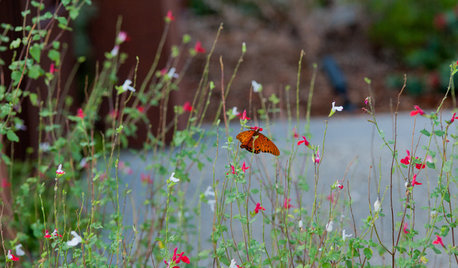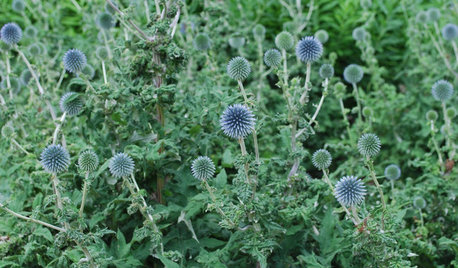butterfly baths
parker806
16 years ago
Related Stories

EARTH DAYCreate a Container Wildlife Habitat for Hummingbirds and Butterflies
Don’t let limited space prevent you from welcoming wildlife into your garden
Full Story
GARDENING FOR BUTTERFLIESBring on the Birds: Natural Habitat Ideas for Gardens of All Sizes
Provide nesting, watering and perching spots inspired by the Costa Rican jungle and watch the birds flock on over
Full Story
GARDENING FOR BUTTERFLIESA Quick-Start Guide to Bird-Watching for Fun and Learning
Set out some seed and grab your field guide. Bird-watching is an easy, entertaining and educational activity for the whole family
Full Story
GARDENING FOR BUTTERFLIESGarden for Wildlife to Reap Rich Rewards
When you plant with animals and insects in mind, you make gardening easier, the planet healthier and yourself more present
Full Story
FALL GARDENINGBe Your Own Wildflower Nursery
Gather seeds from your garden in fall, and you'll have a selection of plants for next year — without spending a dime
Full Story
GARDENING GUIDESGreat Design Plant: Globe Thistle
Trot out globe thistle in a sun-drenched garden spot for strikingly sculptural blue flowers through October
Full Story
GARDENING FOR BUTTERFLIESGreat Design Plant: Red Bird-of-Paradise Soars With Color
Fiery bursts of red-orange flowers bring hot summer gardens to life, while this shrub's drought tolerance keeps the living easy
Full Story
GARDENING GUIDESEvocative Plants to Awaken All the Senses
Slip into a garden wonderland that brings more than mere visual delight, by including these grasses, flowers and herbs
Full Story
GARDENING AND LANDSCAPINGHow to Attract Birds to Your Garden
From habitats to feeders, simple tips to help your yard take flight
Full Story
INSPIRING GARDENSLawn Gives Way to a More Natural Lakeside Garden
Meadow grasses, beach pebbles and driftwood replace turfgrass in a nature-friendly landscape on Lake Washington’s shore
Full StorySponsored






wildflowerchris
susanlynne48
Related Professionals
Holly Springs Landscape Architects & Landscape Designers · Montgomeryville Landscape Architects & Landscape Designers · Owings Mills Landscape Architects & Landscape Designers · Roxbury Crossing Landscape Architects & Landscape Designers · Dallas Landscape Contractors · Damascus Landscape Contractors · Dedham Landscape Contractors · Placerville Landscape Contractors · Saint George Landscape Contractors · Ridgewood Fence Contractors · Clarksburg Fence Contractors · El Monte Fence Contractors · Central Islip Window Contractors · Estero Window Contractors · Greenburgh Window Contractorstexaspuddyprint
ladobe
susanlynne48
ladobe
susanlynne48
ladobe
susanlynne48
cdsetx8
ladobe